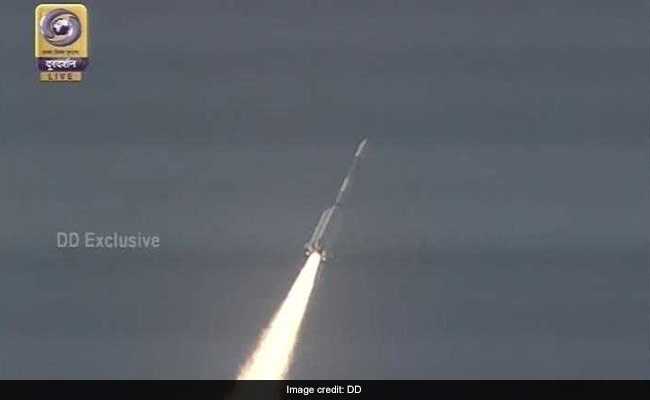
ISRO's GSAT-6A Communication Satellite was launched from Sriharikota space port in Andhra Pradesh at 4:56 pm today. Leaving behind plumes of smoke, the 49.1 metre tall GSLV soared majestically into clear skies, carrying the 2,140 kg GSAT-6A satellite to be injected into a geostationary orbit at a height of about 36,000 km. The satellite is home-made and like its predecessor GSAT-6, the GSAT-6A too is a high power S-band communication satellite. It will complement GSAT-6, which has been orbiting Earth since August 2015 at 83 degrees East longitude. The two rockets in tandem will provide signals that would permit two-way exchange of data even from very remote locations where mobile connectivity is still limited, making it extremely useful for the armed forces.
Here are key facts about ISRO's GSAT-6A Communication Satellite:
The GSAT-6A communication satellite weighs 2066 kg and cost around Rs 270 crore. The satellite will be able to send and receive signals from hand-held devices.
Along with the cryogenic engine, the GSLV has a second engine: Vikas, which works on liquid propellants. In future, the Vikas engine may become the mainstay of Indian rockets and could even be deployed when India hoists the Chandrayaan-2 mission.
The GSAT-6A carries one of the largest antennas ISRO has built, with a diameter of 6 meters, which will open up like an umbrella once the satellite is in orbit.
The huge size of the antenna gives it more power, which ensures that a two-way exchange of data -- data, video or voice -- can be carried out through small hand-held devices from any corner of the country.
This is India's second predominantly S-band communications satellite - first being the GSAT-6.
GSAT-6A will provide mobile communication for India through multi-beam coverage facility.
Apart from communications, the GSAT-6A satellite is believed to be designated for military use as well.
The GSLV which carried the communications satellite has been dubbed the "Naughty Boy" of space agency by ISRO scientists as only five of GSLV's 11 earlier launches have been successful.
The GSAT-6A is ISRO's last launch for the financial year 2017-18.
The life span of the GSAT-6A mission will be around 10 years, says ISRO.

